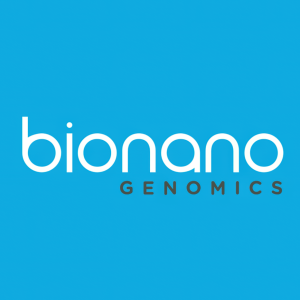Bionano Announces Publication Outlining Utility of OGM for Resolution of MYC Gene Rearrangements in Multiple Myeloma
Rhea-AI Summary
Bionano Genomics (BNGO) announced a publication in Blood Cancer Journal highlighting the effectiveness of Optical Genome Mapping (OGM) in detecting MYC gene rearrangements in multiple myeloma (MM). The study, conducted by researchers at Korea College of Medicine, demonstrated that OGM identified MYC-positive cases in 40% of samples, compared to 26% with FISH and 13% with karyotype methods. The research emphasizes OGM's superior ability to resolve translocation partners and provide comprehensive genome variation analysis, potentially streamlining workflow and improving cost efficiency in MM diagnosis and research.
Positive
- OGM showed superior detection rate (40%) compared to traditional methods (FISH 26%, karyotype 13%)
- Technology demonstrates potential for streamlined workflow and cost efficiency by replacing multiple sequential analyses with a single assay
- OGM provides more comprehensive genome variation analysis than traditional methods
Negative
- None.
News Market Reaction 1 Alert
On the day this news was published, BNGO gained 0.27%, reflecting a mild positive market reaction.
Data tracked by StockTitan Argus on the day of publication.
- Publication shows that OGM can resolve translocation partners involving MYC in multiple myeloma (MM) more effectively than current methods
- The release of compelling data in MM underscores the potential for wider adoption and use of OGM across all blood cancers as an alternative to traditional methods like karyotyping and fluorescence in-situ hybridization (FISH)
SAN DIEGO, Oct. 24, 2024 (GLOBE NEWSWIRE) -- Bionano Genomics, Inc. (Nasdaq: BNGO) today announced the publication in Blood Cancer Journal by a group of researchers at the Korea College of Medicine in South Korea showing that optical genome mapping (OGM) can resolve rearrangements in the MYC gene in multiple myeloma (MM), which represent highly actionable biomarkers in cancer. MM accounts for
Key findings:
- OGM performed better than conventional cytogenetics: Using OGM, the results were MYC-positive in
40% of cases, while positive rate was26% and13% using FISH and karyotype, respectively. Karyotyping can fail to identify MYC rearrangements and cannot resolve its translocation partners, which is a critical component in the stratification of the disease for prognosis and management. - Complementary to other molecular techniques: OGM provides a complementary approach by revealing large structural variations that may be missed by methods like next-generation sequencing (NGS). A comprehensive view of genome variation can provide a more complete understanding of the drivers of multiple myeloma, which could lead to advancements of precision medicine.
- Streamlined Workflow and Cost Efficiency: The study also highlights the efficiency of OGM compared to traditional cytogenetics, which can be time consuming and laborious. OGM can reduce the need for sequential analysis such as karyotyping, followed by multiple rounds of FISH analysis. OGM can provide the same information and more in a single assay versus the tiered assays (common in cytogenetics today), and shorten the time to accurate classification and stratification of blood cancers, including MM.
Erik Holmlin, president and chief executive officer of Bionano commented, “multiple myeloma is a devastating disease that is virtually uncurable. With proper stratification of blood cancers using OGM, we believe identification of multiple myeloma will improve and will have the potential to provide clinicians and researchers with a better understanding of the disease. This paper represents an important step in the progression of showing the utility of OGM across a wider spectrum of blood cancers and therefore increasing potential for adoption and utilization as an alternative to traditional cytogenetic methods.”
The full research publication is available at: https://rdcu.be/dXUKf
About Bionano
Bionano is a provider of genome analysis solutions that can enable researchers and clinicians to reveal answers to challenging questions in biology and medicine. The Company’s mission is to transform the way the world sees the genome through optical genome mapping (OGM) solutions, diagnostic services and software. The Company offers OGM solutions for applications across basic, translational and clinical research. The Company also offers an industry-leading, platform-agnostic genome analysis software solution, and nucleic acid extraction and purification solutions using proprietary isotachophoresis (ITP) technology. Through its Lineagen, Inc. d/b/a Bionano Laboratories business, the Company also offers OGM-based diagnostic testing services.
For more information, visit www.bionano.com or www.bionanolaboratories.com.
Except as specifically noted otherwise, Bionano’s products are for research use only and not for use in diagnostic procedures.
Forward-Looking Statements of Bionano Genomics
This press release contains forward-looking statements within the meaning of the Private Securities Litigation Reform Act of 1995. Words such as “can,” “believe,” “may,” “potential,” “will,” and similar expressions (as well as other words or expressions referencing future events, conditions or circumstances) convey uncertainty of future events or outcomes and are intended to identify these forward-looking statements. Forward-looking statements include statements regarding our intentions, beliefs, projections, outlook, analyses or current expectations concerning, among other things, OGM’s ability to resolve rearrangements in the MYC gene in MM; the potential for wider adoption and use of OGM across all blood cancers as an alternative to traditional methods like karyotyping and fluorescence in-situ hybridization (FISH); OGM’s ability to identity MYC rearrangements and resolve its translocation partners that traditional cytogenetic methods may miss; the ability of OGM to provide a complementary approach by revealing large structural variations missed by methods like NGS; OGM’s ability to provide a comprehensive view of genome variation and provide a more complete understanding of the drivers of multiple myeloma and lead to advancements of precision medicine; OGM’s ability to reduce the need for sequential analysis such as karyotyping, followed by multiple rounds of FISH analysis; OGM’s ability to provide the same information and more in a single assay versus the tiered assays (common in cytogenetics today), and to shorten the time to accurate classification and stratification of blood cancers, including MM; OGM’s ability to improve identification of MM and to provide clinicians and researchers with a better understanding of the disease; OGM’s ability and utility for adoption across a wider spectrum of blood cancers and increase in adoption and utilization as an alternative to traditional cytogenetic methods; the utility of OGM for applications in areas reported in this press release; the growth and adoption of OGM for use in hematologic research applications; and other statements that are not historical facts. Each of these forward-looking statements involves risks and uncertainties. Actual results or developments may differ materially from those projected or implied in these forward-looking statements. Factors that may cause such a difference include the risks and uncertainties associated with: global and macroeconomic events, such as recent and potential bank failures, supply chain disruptions, global pandemics, inflation, and the ongoing conflicts between Ukraine and Russian and Israel and Hamas, on our business and the global economy; general market conditions; changes in the competitive landscape and the introduction of competitive technologies or improvements to existing technologies; the failure of OGM to resolve rearrangements in the MYC gene in MM; the failure of wider adoption and use of OGM across all blood cancers as an alternative to traditional methods like karyotyping and fluorescence in-situ hybridization (FISH); the failure of OGM to identity MYC rearrangements and resolve its translocation partners that traditional cytogenetic methods may miss; the failure of OGM to provide a complementary approach by revealing large structural variations missed by methods like NGS; the failure of OGM to provide a comprehensive view of genome variation and a more complete understanding of the drivers of multiple myeloma leading to advancements of precision medicine; the failure of OGM to reduce the need for sequential analysis such as karyotyping, followed by multiple rounds of FISH analysis; the failure of OGM to provide the same information and more in a single assay versus the tiered assays (common in cytogenetics today), and to shorten the time to accurate classification and stratification of blood cancers, including MM; the failure of OGM to improve identification of MM and to provide clinicians and researchers with a better understanding of the disease; the failure of OGM to be adopted and prove useful across a wider spectrum of blood cancers and increase in adoption and utilization as an alternative to traditional cytogenetic methods; the failure of OGM to prove useful for applications in areas reported in publication referenced in this press release; future publications that contradict the findings of the publication referenced in this press release; the failure of OGM adoption to grow in hematologic research applications; changes in our strategic and commercial plans; our ability to obtain sufficient financing to fund our strategic plans and commercialization efforts; our ability to effectively manage our uses of cash, and our ability to continue as a “going concern”; the ability of medical and research institutions to obtain funding to support adoption or continued use of our technologies; and the risks and uncertainties associated with our business and financial condition in general, including the risks and uncertainties described in our filings with the Securities and Exchange Commission, including, without limitation, our Annual Report on Form 10-K for the year ended December 31, 2023 and in other filings subsequently made by us with the Securities and Exchange Commission. All forward-looking statements contained in this press release speak only as of the date on which they were made and are based on management’s assumptions and estimates as of such date. We do not undertake any obligation to publicly update any forward-looking statements, whether as a result of the receipt of new information, the occurrence of future events or otherwise.
CONTACTS
Company Contact:
Erik Holmlin, CEO
Bionano Genomics, Inc.
+1 (858) 888-7610
eholmlin@bionano.com
Investor Relations:
David Holmes
Gilmartin Group
+1 (858) 888-7625
IR@bionano.com







